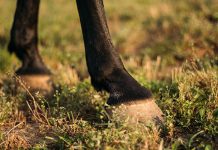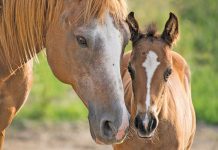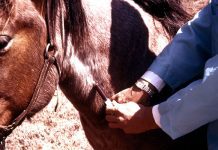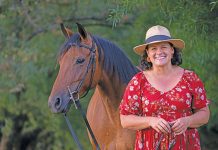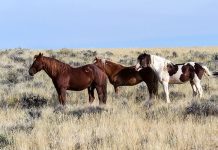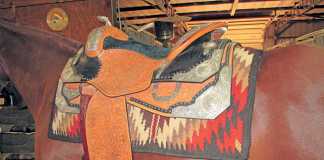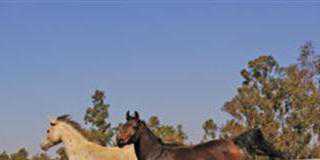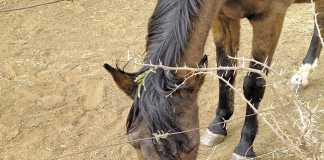You notice that your horse is standing with its forelegs stretched out in front of its body, half-crouching on its hind legs, trying to support its bodyweight. The hooves are hot, the horse is anxious and has a high temperature. A pulse is beating at the back of the pastern, above the hoof. What you are dealing with is probably laminitis, a common cause of severe lameness that can sometimes be fatal.
What is laminitis?
The tissues that bind the hoof wall to the underlying tissues and the pedal or coffin bone look like the pages of a book and are called ‘laminae’ (Latin for ‘blades’, on account of their thinness). Laminitis occurs when these become inflamed. Where bacterial toxins are involved, tiny clots form in the capillaries and impede the blood flow to the laminae. The resulting inflammation is very painful and leads to detachment of the hoof wall from the pedal bone.
In severe cases, the pedal bone rotates downwards. Its point can even go through the sole of the hoof, causing a disease known as ‘founder’. If a horse founders it may need radical work from a farrier or may even have to be put down. Laminitis is most common in those parts of South Africa with lush pastures, such as the KwaZulu-Natal Midlands, when the grass grows rapidly in spring and early summer. In drier areas, it can be associated with a diet high in carbohydrates such as maize or molasses, especially at the end of winter when roughage is scarce.
Multifactorial
Although mainly associated with feed, laminitis can also occur as a result of an infection such as an abscess or retained afterbirth, where bacterial toxins are released into the bloodstream. When a mare has foaled, the afterbirth should always be laid out on the ground to check that nothing has been retained in the womb. If the afterbirth is incomplete, consult with a vet within four hours.
A severely injured foot that leaves the other feet carrying too much weight can also cause laminitis. In many cases, however, laminitis is multifactorial – it occurs when several causes interact, such as genetic predisposition paired with a diet high in carbohydrates and low in calcium.
Prevention and treatment
The main cause of acute laminitis is excessive intake of grass or grain, particularly in over-fat ponies. It may be necessary to keep them away from pastures when the grass is particularly lush and add a high proportion of fibre to the diet, such as mature, dry hay.
Overweight horses should also have sufficient mineral supplementation. The correct ratio of calcium to phosphate is essential.
Chronic, low grade laminitis can be controlled by special shoes and diet restriction. However, acute cases are a medical emergency and a vet must be contacted straightaway. A fairly successful treatment involves inserting the legs into buckets filled with ice.
As this rapidly reduces pain, horses are often happy to stand in ice for 48 to 72 hours. High doses of non-steroidal anti-inflammatory drugs must be continued for several days. In severe cases, the vet may even do nerve blocks to reduce pain. Radiographs may be done to check if the pedal bone is rotating. Stall rest and deep bedding are used to minimise movement in the acute stage. Fortunately, in most cases, complete recovery is possible if the horse is treated in time.

